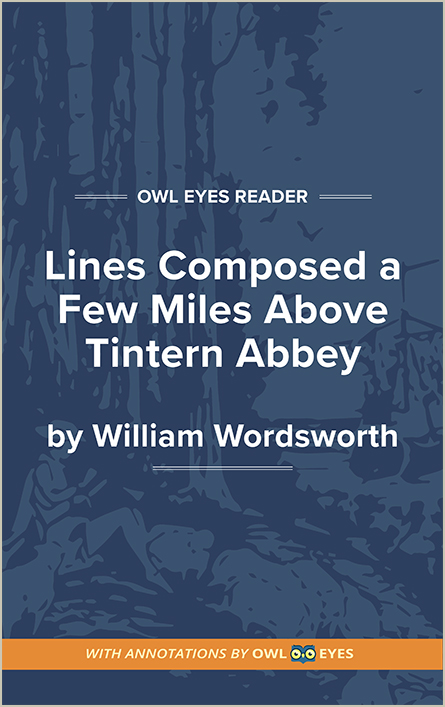Analysis Pages
Imagery in Lines Composed a Few Miles Above Tintern Abbey
Juxtaposition of Imagery: One of the main ways Wordsworth conveys nature’s capacity to uplift the human spirit is through the juxtaposition of imagery. City life, which Wordsworth and other Romantic poets often shunned, is characterized in negative terms such as “unintelligible” and “burthen.” Nature, in contrast, is assigned positive descriptors, such as when Wordsworth describes the effect of nature on the human spirit as a “blessed mood” which lightens and alleviates the burdens of civilization.
Imagery Examples in Lines Composed a Few Miles Above Tintern Abbey:
Lines Written a Few Miles above Tintern Abbey, on Revisiting the Banks of the Wye during a Tour, July 13, 1798
🔒"murmur..." See in text (Lines Written a Few Miles above Tintern Abbey, on Revisiting the Banks of the Wye during a Tour, July 13, 1798)

